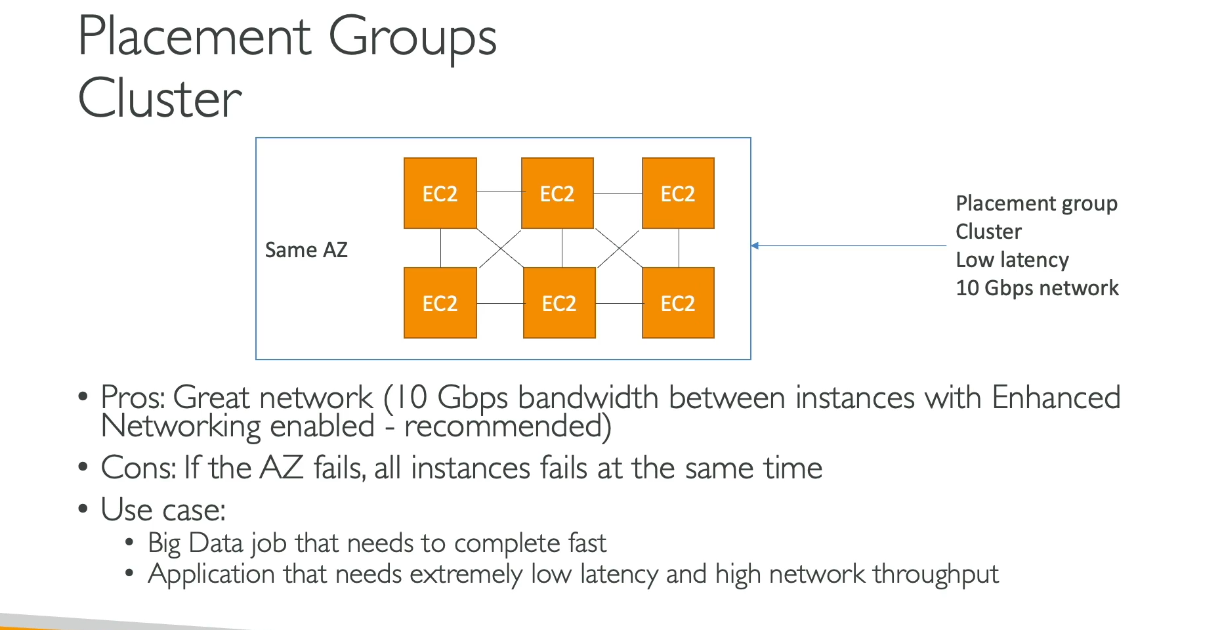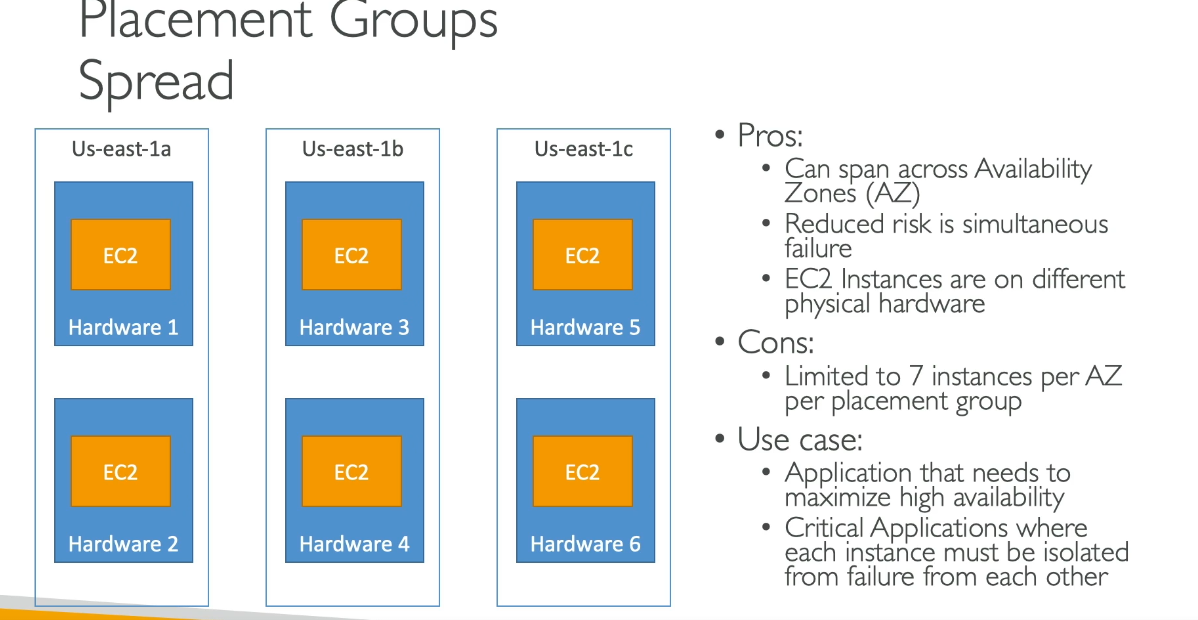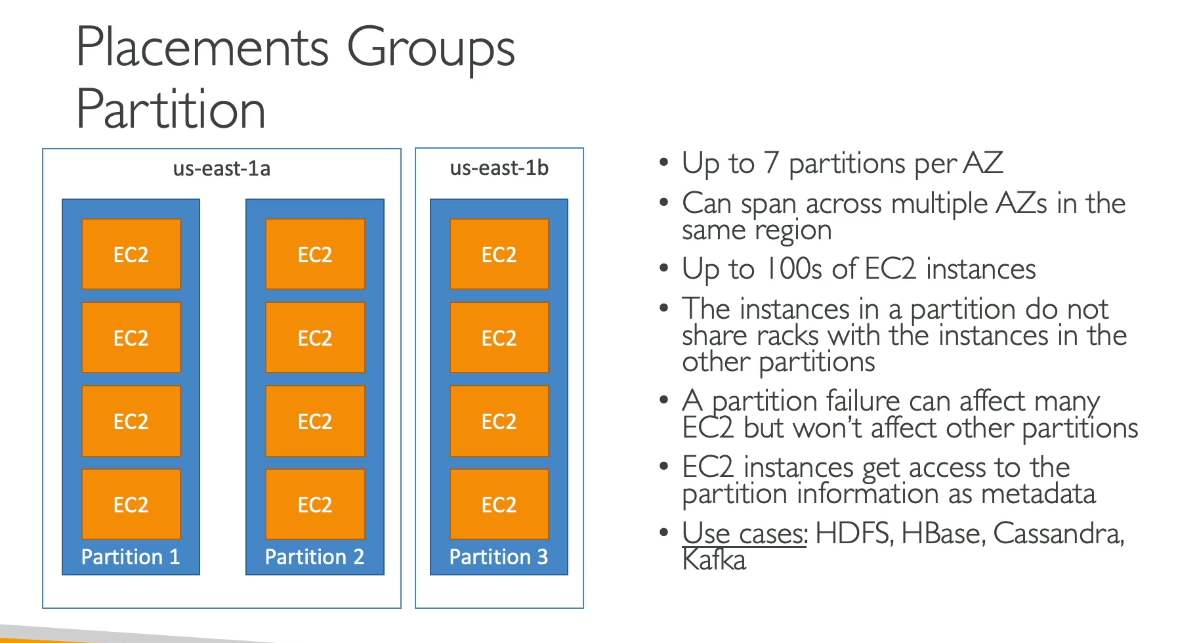There are 3 kinds of placement groups for EC2 instances:
Cluster groups – launch each associated instance into a single AZ within close physical proximity to each other. Same Rack.
Provides low-latency network interconnectivity and can be useful for HPC applications for instance.
Spread groups – separate instances physically across distinct hardware racks and even AZ to reduce the risk of failure-related data or service loss.
Such a setup is valuable when running that can’t tolerate multiple concurrent failures.
Partition groups – let’s associate some instances with each other, placing them in a single “partition”. But the instances within that single partition can be kept physically separated from instances from other partitions.



Partition Placement Group vs. Spread Placement Group vs. Cluster Placement Group:
| Feature | Partition Placement Group | Spread Placement Group | Cluster Placement Group |
|---|---|---|---|
| Fault Tolerance | High (Instances are spread across different partitions to reduce correlated failure risks) | High (Instances are spread across distinct hardware to avoid simultaneous failures) | Low (Instances are in the same hardware, high risk of simultaneous failure) |
| Number of Instances | Multiple instances per partition (up to 7 partitions per AZ) | One instance per distinct hardware unit | Multiple instances, but all placed on the same physical hardware |
| Use Case | Distributed applications requiring high availability (e.g., Hadoop, Cassandra) | Critical applications requiring high availability (e.g., microservices with fault isolation) | Low-latency workloads requiring high throughput (e.g., HPC, in-memory databases) |
| Instance Placement | Instances are distributed across multiple partitions within an AZ | Instances are spread across multiple hardware units (across racks, etc.) | Instances are tightly packed for low-latency |
Summary of Key Limits for EC2 Partition Placement Groups:
| Limit Type | Details |
|---|---|
| Number of Partitions per AZ | 7 partitions (per AZ in most regions) |
| Instances per Partition | Varies by instance type (smaller types = more instances per partition) |
| Instance Type Compatibility | Must use compatible EC2 instance types (e.g., C5, M5, T3, etc.) |
| Max Instances in Placement Group | Varies by instance type, region, and account limits |
| Placement Group Scope | All instances must be in the same AZ |
| Placement Group Creation Limit | 5 placement groups per region by default |
| Instance Placement Constraints | Cannot mix Cluster/Spread with Partition Placement Groups |